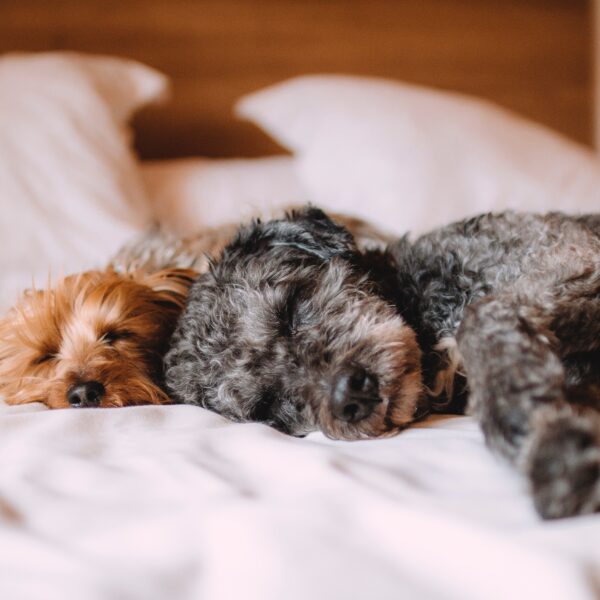Flystrike is a serious and painful condition that can develop very quickly, especially in the summer months. If you’re looking after a guinea pig or rabbit, it’s best to know the signs of flystrike so you can spot any problems as soon as possible. Prevention is better than cure though, and fortunately there’s lots you can do to stop your pet developing this dangerous condition. Read on to find out more about flystrike in guinea pigs and rabbits.
What is flystrike?
So, what exactly is flystrike? This horrible condition occurs when flies lay eggs on the pet’s skin which hatch out into maggots and feed on your pet’s tissues. This gruesome condition can be very painful and can even lead to death from shock and infection.
Flystrike can progress very rapidly as the eggs can hatch out in just a matter of hours. The maggots develop quickly too, so it’s important to check your pets regularly. The condition usually develops around the back end, but it can be seen on other areas of the body too.

Which pets can get flystrike and what increases the risk?
Flystrike is usually associated with rabbits, but can guinea pigs get flystrike too? The answer is yes, flystrike can develop in any rabbit or guinea pig. This includes those pets who live indoors, as flies can sometimes sneak in through doors or windows and it only takes one fly to cause problems. The condition can also develop at any time of year, though it is more common in the summertime when there are more flies around.
While flystrike can occur in any pet at any time, there are some factors that increase the risk. Flies are particularly attracted to damaged or broken skin, so any bunny or piggie with a wound is at greater risk. Flies also tend to go for moist and soiled skin, which explains why the condition is more common in pets with a dirty back end.
A dirty back end is often seen in rabbits and guinea pigs who are producing loose faeces, or those who aren’t eating their caecotrophs (the softer poo pellets that need to pass through the digestive system one more time – see our rabbit poop guide to learn more!). Elderly or obese animals who struggle to reach their back end are especially likely to have problems cleaning themselves up in this area. Also, pets with urinary issues can develop moist and broken skin around their hindquarters.

Flystrike symptoms in rabbits and guinea pigs
So, what are the signs of flystrike to look out for? While you’d think it would be obvious to see maggots in an area of damaged skin, flystrike isn’t always as easy to notice as you might expect. Since the condition develops so quickly and is often found on your pet’s underside, you might not catch it early unless you look for it. This means it’s really important to check your pets over regularly, especially in the summer – ideally twice a day.
Before you spot maggots, you might notice that your pet seems generally unwell – they may seem quiet and lethargic and go off their food and drink. You may also notice a strong smell from the infected skin. If your pet shows any of these signs of flystrike, take them to the vets for a check-up.
How to treat flystrike in rabbits and guinea pigs
The first thing to do if you suspect that bunny or piggie has flystrike is to take them down to the vets as an emergency. Your vet will then examine your pet and see how serious the situation is. If they diagnose flystrike and think your pet is likely to pull through with treatment, the first thing they will do is to give your pet some pain relief and clean the affected area, clipping the surrounding fur and being careful to remove all the maggots. Depending on how serious the damage is, they may need to give your pet a light anaesthetic or sedation to clean the tissue thoroughly without hurting them.
Your vet is also likely to start antibiotic treatment and they may advise keeping your pet in for a little while to make sure they’re eating well and give them some fluid support if necessary. When your pet goes home, your vet may give you various medications to continue including antibiotics, pain relief and topical treatment for the affected area, plus other supportive treatments if necessary. It is very important that rabbits and guinea pigs keep eating when they are unwell, and your vet will explain how to look after your pet to make sure they keep eating.

How can you prevent flystrike in guinea pigs and rabbits?
Fortunately, there are several things you can do to reduce the risk of flystrike in your pet. Since flies are attracted to damaged, dirty or damp skin, it’s important to keep your pet clean and dry, particularly around their back end. If you check your pet over twice a day, you can gently wipe away any mess.
If you notice that your pet is regularly becoming dirty in this area, it’s worth seeking veterinary advice to see if there’s anything you can do about it. Elderly arthritic pets may benefit from some pain relief to help them reach their hindquarters without discomfort, and obese animals will become more mobile with weight loss. For pets who have loose faeces due to dietary problems, changing the diet can work wonders. A healthy diet for rabbits and guinea pigs is high in fibre – about 80% hay or grass, plus some high-quality food designed for the species and a handful of fresh greens.
Another way of defending against flystrike is to target the flies themselves. But how to keep flies away from guinea pigs and rabbits? Keeping the environment clean is a first step: cleaning out the hutch and run regularly will make it less attractive to flies. Fly screens can also help, as can plants that deter insects. However, possibly the most effective step you can take is to use preventative treatments throughout the late spring, summer and early autumn. These treatments are designed to stop fly eggs hatching into maggots or to repel flies. Your vet will be able to advise on these products and explain how to apply them to your pet’s skin.
Found these tips helpful? Join Vital Pet Club’s e-news to be the first to hear about exclusive pet freebies and pet care tips!


